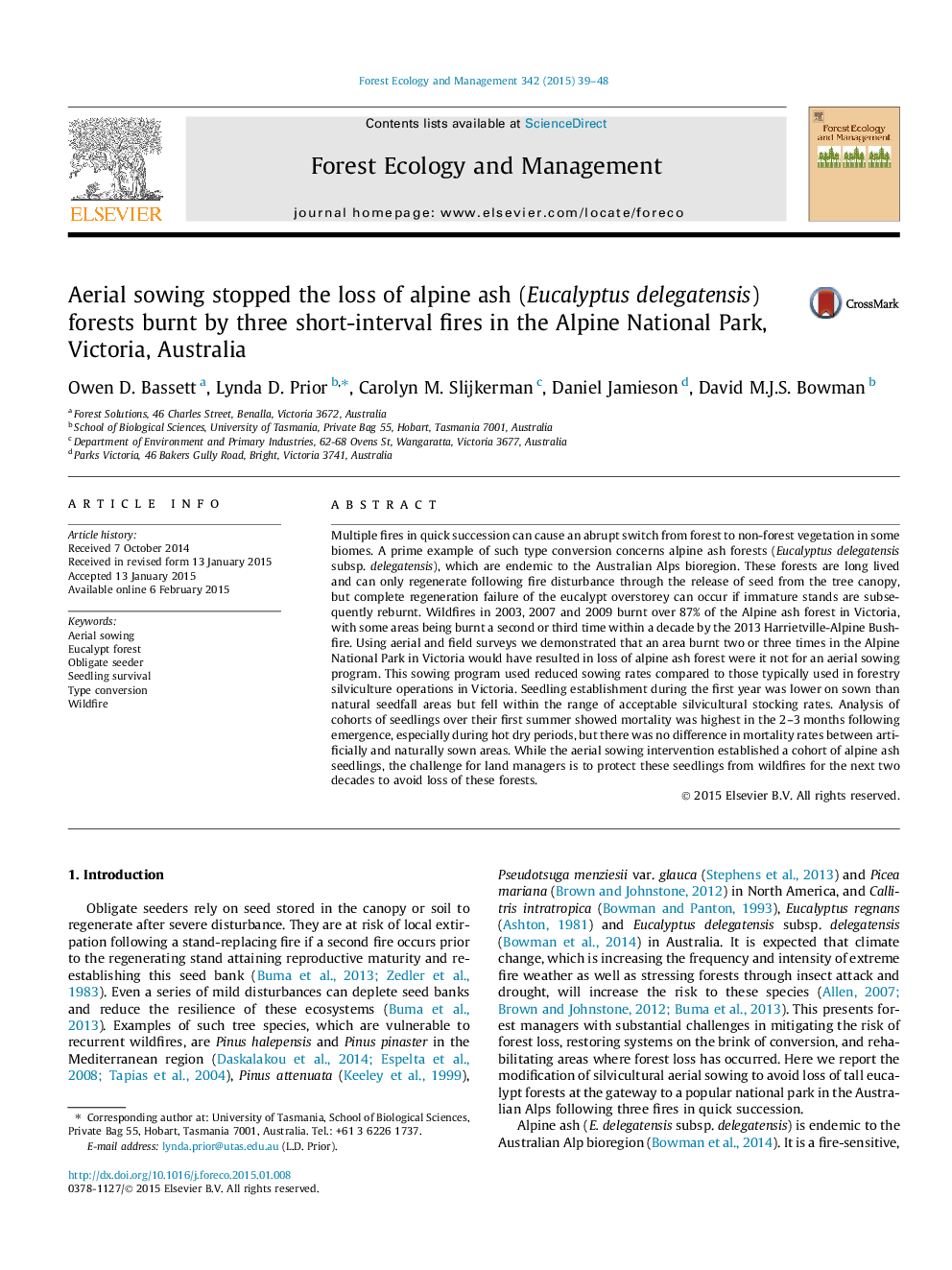| کد مقاله | کد نشریه | سال انتشار | مقاله انگلیسی | نسخه تمام متن |
|---|---|---|---|---|
| 86301 | 159177 | 2015 | 10 صفحه PDF | دانلود رایگان |

• Large areas of Australian alpine ash forest have been burnt three times since 2002.
• This obligate seeder needs 20 years without fire to reach sexual maturity.
• Our survey confirmed virtually no seedlings in areas burnt multiple times.
• We assessed the effectiveness of aerial sowing to regenerate burnt forests.
• Sown areas had satisfactory densities of seedlings at the end of the first summer.
Multiple fires in quick succession can cause an abrupt switch from forest to non-forest vegetation in some biomes. A prime example of such type conversion concerns alpine ash forests (Eucalyptus delegatensis subsp. delegatensis), which are endemic to the Australian Alps bioregion. These forests are long lived and can only regenerate following fire disturbance through the release of seed from the tree canopy, but complete regeneration failure of the eucalypt overstorey can occur if immature stands are subsequently reburnt. Wildfires in 2003, 2007 and 2009 burnt over 87% of the Alpine ash forest in Victoria, with some areas being burnt a second or third time within a decade by the 2013 Harrietville-Alpine Bushfire. Using aerial and field surveys we demonstrated that an area burnt two or three times in the Alpine National Park in Victoria would have resulted in loss of alpine ash forest were it not for an aerial sowing program. This sowing program used reduced sowing rates compared to those typically used in forestry silviculture operations in Victoria. Seedling establishment during the first year was lower on sown than natural seedfall areas but fell within the range of acceptable silvicultural stocking rates. Analysis of cohorts of seedlings over their first summer showed mortality was highest in the 2–3 months following emergence, especially during hot dry periods, but there was no difference in mortality rates between artificially and naturally sown areas. While the aerial sowing intervention established a cohort of alpine ash seedlings, the challenge for land managers is to protect these seedlings from wildfires for the next two decades to avoid loss of these forests.
Journal: Forest Ecology and Management - Volume 342, 15 April 2015, Pages 39–48